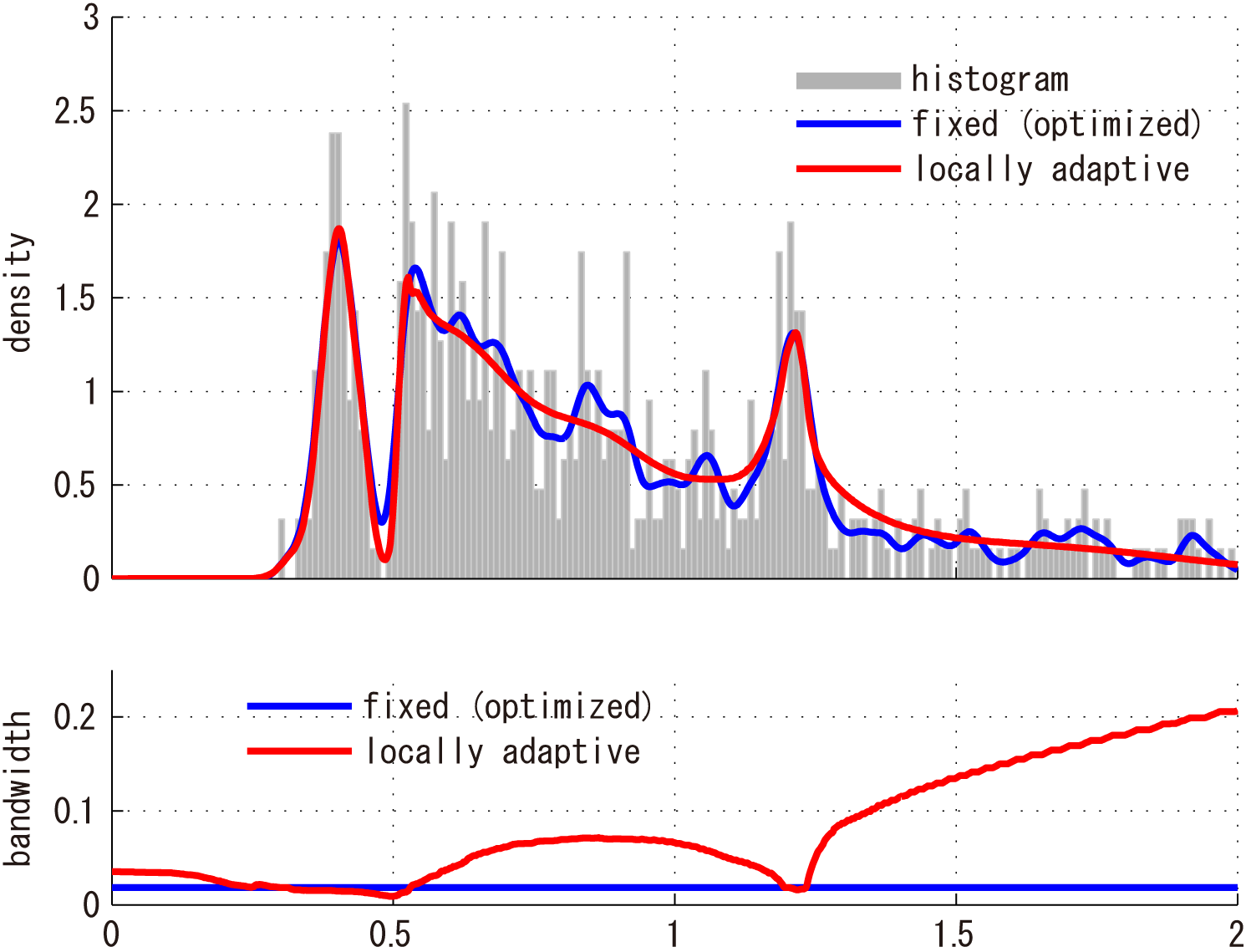
Fixed kernel density estimation method: sskernel.m
Function `sskernel' returns an optimized kernel density estimate using a Gauss kernel function.
Examples:
>> x = 0.5-0.5*log(rand(1,1e3)); t = linspace(0,3,1000);
>> [y,t,optw] = sskernel(x,t);
This example produces a vector of kernel density estimates, y, at points specified in a vector t, using an optimized bandwidth, optw (a standard deviation of a normal density function).
We have also developed a locally adaptive kernel density estimation method.
Matlab code: ssvkernel.m
Function `ssvkernel' returns an optimized kernel density estimate using a Gauss kernel function with bandwidths locally adapted to data.
Examples:
>> x = 0.5-0.5*log(rand(1,1e3)); t = linspace(0,3,500);
>> [y,t,optw] = ssvkernel(x,t);
This example produces a vector of kernel density estimates, y, at points specified in a vector t, using locally adaptive bandwidths, optw. |
![]() be your data. Let the kernel with bandwidth
be your data. Let the kernel with bandwidth ![]() be
be ![]() .
.
![]() that minimizes
that minimizes  .
.